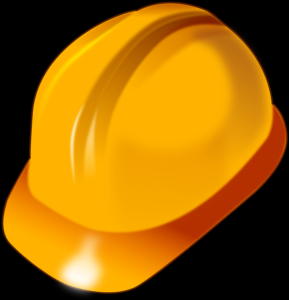Concrete is an important tool in the construction industry, universally used across job types and locations. It is used in just about every building project in every town, but it can be hazardous. Concrete workers tend to have an injury rate of nearly 10% each year, and in a workforce of over 250,000 people, 10% is a lot of injuries. Keep your employees and yourself safe on the job site by following safety procedures and making sure everyone wears the proper protective gear. Find out about some of the risks of concrete work and the gear that can protect you.
Protect Skin
Concrete dust does not automatically cause skin irritation in all people. Individuals with sensitive skin or with rashes or open cuts are likely to experience more irritation from the abrasive effects of the dust. If your skin is damp or wet from sweat, rain, or something else, the dust on your skin can turn to wet concrete. This is an alkali irritant that can cause serious burns when it is trapped against the skin. The best bet is to wear clothes that cover your skin, including long pants, long sleeves, and gloves. Ensure that you are tucking in clothes correctly so that wet concrete doesn’t get under your protective gear. For those with broken skin, make sure to adequately cover it. If you must kneel in this substance, wear knee pads. Finally, make sure that your boots are waterproof, higher than the depth of the concrete, and in good repair.
Protect Eyes
Concrete dust from the powder mix that forms the base to the debris kicked up during cutting can be very dangerous for the eyes. Your eyes need to be protected from the dust, which is abrasive and can cause serious burn damage. Goggles or other eye protection should be mandatory in any dusty area and absolutely must be worn when cutting or breaking up concrete. If you must wear contacts, you should wear ventless goggles. If you’re working with wet concrete, always wear goggles and know where the eyewash station is located.
Protect Lungs From Concrete Dust
Concrete dust can cause irritation to the mouth, nose, throat, and lungs if you breathe it in because it has silica. Over time, repeated exposure to silica can cause scarring of the lungs called silicosis (inhaling a large amount in one instance can also cause silicosis). Over time, you can also develop a respiratory allergy to chromium in cement. Always make sure that you are working in well-ventilated areas and wear respiratory protection whenever a large amount of this dust will be present.
Concrete Visions Will Get The Job Done Right
Concrete Visions has been working with clients for over 25 years. Our G&M Services installers are certified with the industry’s major firestop product manufacturers. As part of our firestop service, we can assess abnormal field conditions and, with the manufacturer’s technical support assistance, provide engineering judgments in a timely fashion to comply with contract specifications. Our Field Mechanics undergo ongoing training, including mandatory monthly safety meetings, weekly Toolbox Talks where safety and equipment information is shred, and trainings on safe work standards and safety best practices.

